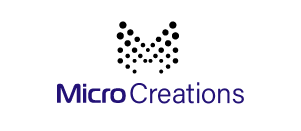Microcreation vs. Macrocreation: Understanding the Difference
January 3, 2024IN BLOG POSTS TEAM BUILDING BY Micro Creation

Introduction
In the realm of creativity and innovation, the terms microcreation and macrocreation often arise. While both concepts are essential to the creative process, they represent two distinct approaches that can significantly impact the way we generate ideas and execute projects. Understanding the differences between microcreation and macrocreation can help individuals and organisations choose the best strategies for their specific goals. In this blog, we will explore both concepts, their characteristics, advantages, and how to effectively integrate them into your creative practice.
Defining Microcreation
Microcreation refers to the practice of breaking down larger projects or ideas into smaller, manageable tasks. This approach encourages incremental progress, allowing individuals and teams to focus on one aspect of a project at a time. Microcreation is characterised by its emphasis on detail, experimentation, and continuous improvement.
For example, if you’re a writer working on a novel, microcreation might involve creating character profiles, drafting individual chapters, or writing specific scenes. Instead of feeling overwhelmed by the idea of completing an entire book, you can focus on one small task, making the process more manageable and less intimidating.
Key Characteristics of Microcreation:
- Incremental Steps: Microcreation involves taking small, deliberate actions that contribute to a larger goal. Each step is manageable and often requires less time and energy than tackling a bigger task all at once.
- Focus on Detail: This approach encourages attention to detail and refinement. By concentrating on individual components, creators can hone their skills and produce higher-quality work.
- Flexibility and Adaptability: Microcreation allows for rapid adjustments based on feedback or new insights. This flexibility enables creators to pivot and adapt as they learn more about their projects.
- Encouragement of Experimentation: Microcreation fosters a mindset of experimentation and exploration. Since the stakes are lower with smaller tasks, individuals are more likely to try new ideas and take risks.
Defining Macrocreation
In contrast, macrocreation refers to the process of developing and executing large-scale projects or ideas. This approach often involves a broader vision and a focus on the overall outcome rather than individual components. Macrocreation is characterised by its strategic planning, comprehensive frameworks, and long-term goals.
For instance, if you’re a filmmaker, macrocreation might involve conceptualising an entire film, developing a storyline, securing funding, and planning the production. Here, the emphasis is on the big picture and the end result, with each step contributing to the larger vision.
Key Characteristics of Macrocreation:
- Holistic Approach: Macrocreation takes a comprehensive view of a project, considering all aspects and how they fit together. This approach is often essential for complex projects that require careful coordination.
- Strategic Planning: Macrocreation involves extensive planning and organisation. This may include setting timelines, allocating resources, and identifying key milestones.
- Long-Term Goals: The focus is on achieving significant outcomes over time. Macrocreation requires patience and persistence, as results may take longer to materialise compared to microcreation.
- Collaboration and Coordination: Large-scale projects often involve multiple stakeholders and teams. Macrocreation necessitates strong collaboration and communication to ensure everyone is aligned with the overall vision.
Comparing Microcreation and Macrocreation
Both microcreation and macrocreation have their strengths and weaknesses. Understanding these can help you decide which approach to adopt based on your specific needs and objectives.
Advantages of Microcreation:
- Reduced Overwhelm: By breaking tasks into smaller steps, microcreation makes projects feel less daunting. This approach encourages individuals to take action without feeling overwhelmed by the scale of the project.
- Enhanced Creativity: The focus on detail and experimentation fosters a creative mindset. Individuals are more likely to explore new ideas and refine their work when they concentrate on smaller tasks.
- Quick Wins: Completing micro-tasks can lead to a sense of accomplishment, boosting motivation and momentum. These quick wins reinforce positive behaviours and encourage continued progress.
Disadvantages of Microcreation:
- Potential for Fragmentation: When focusing too much on individual tasks, there’s a risk of losing sight of the bigger picture. It’s essential to maintain a balance between microcreation and macrocreation to ensure alignment with overall goals.
- Time-Consuming: While microcreation allows for detailed work, it can also be time-consuming. If not managed effectively, this approach may slow down progress on larger projects.
Advantages of Macrocreation:
- Clear Vision: Macrocreation provides a clear roadmap for achieving long-term goals. This strategic approach can be particularly beneficial for complex projects that require thorough planning.
- Alignment and Coordination: Macrocreation fosters collaboration among team members and stakeholders. A shared vision encourages alignment and helps ensure everyone is working towards the same outcome.
- Resource Allocation: With a macro approach, organisations can allocate resources more effectively, ensuring that time, budget, and personnel are aligned with project priorities.
Disadvantages of Macrocreation:
- Risk of Overwhelm: Large-scale projects can feel overwhelming, especially if not properly planned. The complexity of macrocreation may lead to analysis paralysis, where teams struggle to take action due to the sheer size of the project.
- Less Flexibility: Macrocreation can be less adaptable to change. Once a project plan is established, making adjustments may require significant effort and coordination, potentially slowing down progress.
Integrating Microcreation and Macrocreation
To maximise the benefits of both microcreation and macrocreation, it’s essential to integrate these approaches into your creative process. Here are some practical strategies to achieve this balance:
- Start with Macrocreation: Begin by defining your overall vision and long-term goals. Develop a comprehensive plan that outlines the key milestones and outcomes you want to achieve.
- Break Down into Microcreation: Once you have a clear macro vision, break it down into smaller tasks. Identify specific actions that contribute to each milestone, making it easier to focus on immediate steps while keeping the bigger picture in mind.
- Regular Check-Ins: Schedule regular check-ins to assess progress on both micro and macro levels. This practice helps ensure that you’re staying on track with your overall vision while also making progress on individual tasks.
- Encourage Collaboration: Foster an environment where team members can collaborate on both micro and macro tasks. Encourage open communication and feedback to ensure alignment and adaptability.
- Be Open to Iteration: Embrace the iterative nature of both approaches. Be willing to refine your macro vision based on insights gained from microcreation, and adjust your micro-tasks as needed to align with changing circumstances.
Conclusion
Microcreation and macrocreation represent two essential approaches to creativity and project management. Understanding the differences between these concepts can help individuals and organisations leverage their strengths while minimising weaknesses.
By integrating microcreation and macrocreation into your creative process, you can achieve a balanced approach that fosters innovation, enhances collaboration, and ultimately leads to successful outcomes. Remember, whether you’re focusing on the details or the big picture, the key is to stay adaptable and open to new possibilities. Embrace both micro and macro perspectives, and watch as your creative projects flourish.


Leave a Comment